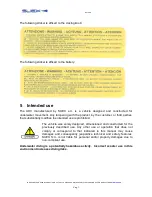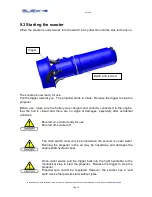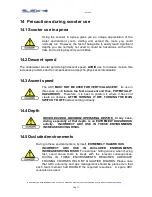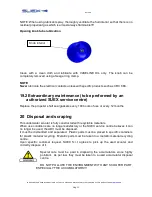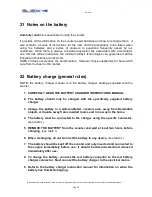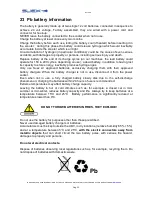
10416UK
TO ENSURE YOUR USER INFORMATION IS UP TO DATE PLEASE DOWNLOAD THE LATEST VERSION OF THIS MANUAL FROM
WWW.SUEX.IT
Pag. 8
6 Diving safety
6.1 Training
The ADV can be used for both recreational and technical divers. In both cases it is
assumed that divers have received necessary certification from qualified boards. In any
case,
ADV use requires specific training
that permits fully safe use, taking full
advantage of its potential. Do not forget that the greatest risk is mainly due to the
underwater environment where it is used.
6.2 Handling configuration and settings
The ADV is TOW BEHIND type (thus different from the so-called “ride on top” kind) and
thus
ideal use
requires the diver to be towed by the ADV by a tow cord (between the
scooter and diver) or by holding onto the specific handles.
Warning
. Restricting the ADV to the diver in a way that is hard to untie,
even by other divers, is strictly prohibited. Quickly abandoning the ADV
at any time must be possible.
We highly suggest gloves (better if padded at least 3 mm thick) be worn
when using the ADV. They prevent the diver from inserting fingers
between the propeller blades and protect him against the surrounding
environment.
Correct equipment settings
are crucial to diving safety and become essential when
diving with the scooter. Generally, equipment types and positions must guarantee perfect
water dynamics and not protrude or hang from the scooter.
The diver’s position
should tend to be horizontal during dives (settings and floating are
always the consequence of correct equipment settings and appropriate training) for safety,
autonomy, scooter speed and diving comfort purposes.
Pay the utmost attention when positioning equipment, especially
concerning: whips, valves, side tanks, pressure gauges, consoles,
sirens, flashlights and cables or reels, preventing them from hanging
and thus coming into contact with the propeller or accidentally catching
on the sea bed or companion, creating even seriously hazard situations.








